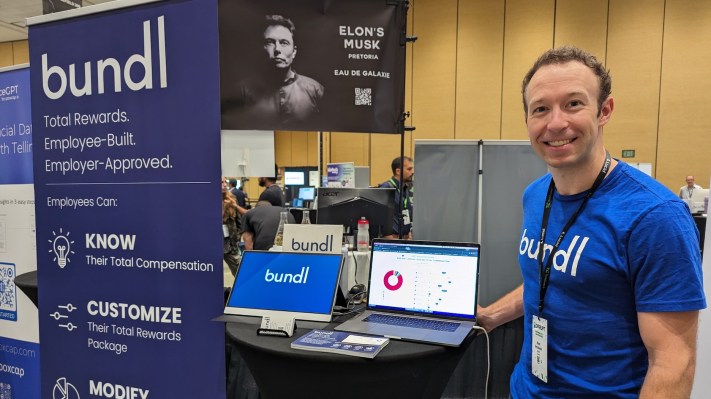Ten years ago, Brad Brochocki was working for a solar startup in Denver. At the end of the year, the owners said they couldn’t give a holiday cash bonus, but instead wanted to give Brochocki more equity in the company.
“I was in my young 20s at the time and equity wasn’t something that really incentivized me at all,” CEO Brochocki told TechCrunch. “What kind of felt like a slap in the face, too, was the offering of a commuter pass, but I drove to and from work, so a bus pass didn’t do anything for me.”
It wasn’t just fellow employees and friends who were thinking the same thing. He also spoke with human resources representatives and found that companies had a similar pain point: knowing what benefits and perks people want or need.
That’s when he got the idea for Bundl, a total rewards software that enables employees to build and customize their own rewards package that best fits their wants and needs. For example, like Brochocki, someone might not want the commuter pass, but might want the ability to buy a Peloton bike.
“When companies don’t know what people want or don’t want, they take the stance that the more we can offer the better,” Brochocki said. “When we don’t know what people are actually investing in or what they’re opting into, it’s a two-sided problem. We want employers to be able to get visibility into what people are choosing and also to give that choice to the employee.”
Brochocki and co-founder and CTO Justin Hundley, a full-stack engineer, built Bundl as an open-ended platform. By tackling total rewards customization, Brochocki says Bundl differentiates itself from others in this space that are using debit cards preloaded with funds.
He said where debit card programs are lacking are that funds often have to be spent in a certain category whether you want to or not. Overall, funds are the same for each employee and rewards are often basic.
With Bundl, employers can spice up their benefit programs by enabling employees to choose, for example, if they want to add more equity to their package or remove their fitness stipend. They could also opt to lower their compensation by 10% in exchange for a four-day workweek or decrease their number of PTO days in exchange for a larger work-from-home stipend.
Here’s how it works: Employers create their list of benefits and perks — Brochocki says Bundl is best if there are five or more — and then say which job roles and titles are eligible for which benefits. Then employers send the Bundl offer to employees so they build a rewards package that fits their needs.
Once ready, employees send it back to the employer. Bundl collects that data and provides a dashboard so employers can see the most and least desired rewards and can filter by both role and department to better understand what incentivizes and retains employees. This can also help determine future rewards to offer, Brochocki said.
“It is a future goal to build this out to anonymize the data so you could see it across the board,” he said.
Bundl launched earlier this year and continues to run lean with just Brochocki and Hundley, who have bootstrapped the company so far. It is currently working with just over a dozen companies in its early access program. These companies can get set up on Bundl and begin using the service for free throughout the rest of the calendar year, Brochocki said.
Up next, the company is building integrations with large HR platforms so that it can onboard the nearly 100 customers waiting in the wings.
